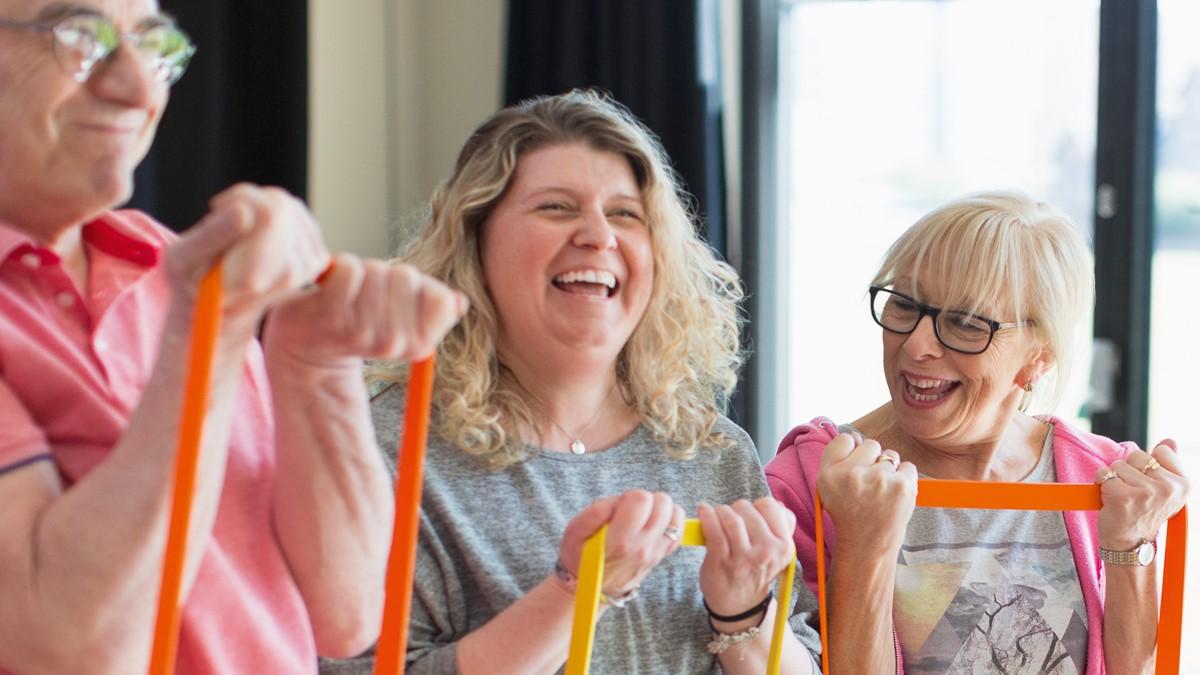Caroline White reports on the latest physio research

A combination of strength exercises and dietary protein is the most effective and easiest way of delaying or reversing frailty in primary care, finds a systematic review of the available published evidence.
Frailty affects around one in 10 people from the age of 65 onwards, and half of those in their 80s. While screening for it is increasingly recommended in primary care, there’s little guidance on how best to manage it once identified, note the researchers.
They trawled research databases for relevant international research, published up to May 2018, on practical approaches to staving off or reversing frailty in primary care. Some 46 studies, involving nearly 16,000 participants, were included in the review.
To map the relative effectiveness and ease of implementation of each approach, the researchers scored outcomes on their ability to make significant changes in frailty status or prevalence, or frailty criteria.
Ease of implementation was assessed according to the degree of multidisciplinary healthcare professional involvement, including physios, costs, and time required.
Nearly two thirds of the studies included more than one intervention. Half involved physical exercises and 10 involved a mix of exercises, such as a combination of aerobic, strength, balance and coordination. Six featured strength exercises as the core component; in two, it was walking. Two focused on basic movement exercises; one tai chi, one robotic balance, and one use of a Wii.
Ten studies included health education on nutrition, medication, falls prevention and social support. Eight included nutritional supplements, of which five used both protein and calories with strength or mixed exercises; one used calories with testosterone. Counselling also featured in some.
The researchers found a significant improvement in over 70 per cent of the 14 studies in which frailty status was measured. Approaches combining strength training and dietary protein were consistently ranked highest for effectiveness and ease
of implementation.
Based on their findings, the researchers recommend 20 to 25 minutes of physical activity, four days a week at home, made up of 15 exercises to strengthen arms and legs and improve balance and coordination, to delay or reverse frailty. Diets should include plenty of daily protein: milk, eggs, tuna or chicken or pulses; or formula protein to supplement meals.
Keeping up the exercises is essential, they emphasise. Healthcare professional encouragement will help to sustain momentum, but it may also be worth exploring the use of group chats and bespoke apps, they say.
‘Frailty remains a complex syndrome and no single intervention may suit all patients,” they write. “Although some strength exercises can simply involve using water bottles or elastic bands, engaging in exercises may not be possible for patients with debilitating conditions. Activity prescription needs to be personalised in primary care for individual circumstances.’ Travers J, et al. Delaying and reversing frailty. British Journal of General Practice 2019.
Vitamin D linked to better exercise capacity
Vitamin D levels in the blood may be linked to higher levels of cardiorespiratory fitness and better exercise capacity, suggests a US study of 1,995 adults.
While vitamin D is known to be important for healthy bones, evidence is beginning to emerge that it may have a key role in other areas of the body as well, including the heart and muscles.
The researchers drew on a representative sample of 20-49 year olds, who were part of the National Health and Nutrition Survey (NHANES) in 2001-04. Data was collected on serum vitamin D levels and VO2 max.
Nearly half the participants (45 per cent) were women and white (49 per cent), 13 per cent had high blood pressure, and around one in 20 (4 per cent) had diabetes.
Participants in the top 25 per cent of vitamin D had a 4.3-fold higher cardiorespiratory fitness than those in the bottom 25 per cent. Each 10 nmol/l increase in vitamin D was associated with a statistically significant 0.78 ml/kg/minute increase in VO2 max.
Lead researcher, Amr Marawan, assistant professor of internal medicine, Virginia Commonwealth University, Virginia, commented: ‘The relationship between higher vitamin D levels and better exercise capacity holds in men and women, across the young and middle age groups, across ethnicities, regardless of body mass index or smoking status, and whether or not participants have hypertension or diabetes.’
After adjusting for potentially influential factors, including age, sex, and high blood pressure, those with the highest levels of vitamin D still had a nearly three-fold higher cardiorespiratory fitness. Marawan A, et al. Association between serum vitamin D levels and cardiorespiratory fitness in the adult population of the USA. European Journal of Preventive Cardiology 2018
Comments and conclusions
- Bony enlargements of the finger joints, Heberden’s nodes, may indicate structural damage associated with knee osteoarthritis, suggests a study of 583 adults, although it’s not clear what the mechanisms behind the link might be. Arthritis & Rheumatology 2019
- Low levels of cardiorespiratory fitness, as measured by a 10-minute treadmill test, may help to indicate future heart risk, finds a study of 4,527 fit, healthy adults, monitored for an average of nearly nine years. Those with the highest levels of cardiorespiratory fitness had nearly half the risk of heart disease of those with the lowest levels. European Heart Journal 2018
- Strong opioids, like fentanyl, are associated with an almost tripling in hip fracture risk, particularly in the first two months of use, compared with other types of painkiller, suggests a study of 23,100 people with Alzheimer’s disease. While the use of mild opioids, such as codeine, was not linked to increased risk, use of moderately strong opioids, like buprenorphine, was associated with a two-fold heightened risk. Pain 2018
Number of subscribers: 3




































